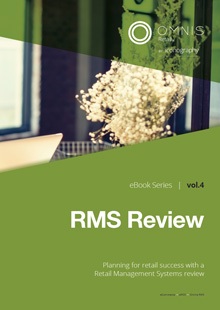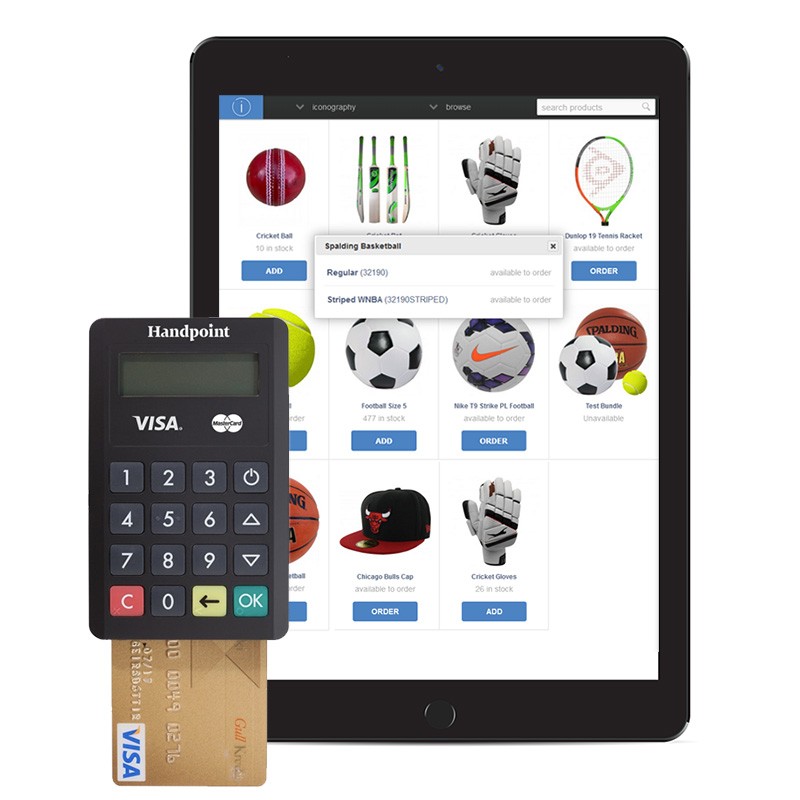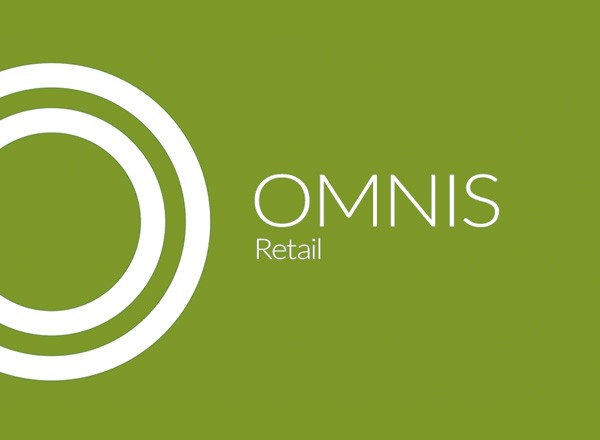Unified Commerce
Meeting the challenges of omnichannel retailing
Improving your operational efficiency
Retailers today often have a complex network of software and systems; eCommerce, EPoS, CRM and Retail Management Systems are just a few that might exist.
This traditional approach - having disparate systems, moving data around, can seriously impact operations. Problems arise when system integrations go wrong and vendors start blame games. Retailers are often left to handle and resolve the issues that lost or inaccurate data causes within their business.
The solution to overcoming these problems lies in a new type of software solution called Unified Commerce.
So, what is Unified Commerce?
OMNIS Retail
Did you know that our platform mixes eCommerce, RMS, CRM and EPoS? It's an award winning Unified Commerce solution that's powering retailers all around the UK.
One system, one database, providing insight and oversight of your omnichannel operation
Unified commerce offers an all-in-one approach to retailers that want to move from siloed multichannel retail to cohesive omnichannel retailing

How to review a Retail Management System
Iconography can help!
It’s a cloud-based software solution that combines eCommerce, a suite of retail management functionality including merchandise and inventory management, warehouse management, reporting, CRM and EPoS in one system running a single central data
It’s a cloud-based software solution that combines eCommerce, a suite of retail management functionality including merchandise and inventory management, warehouse management, reporting, CRM and EPoS in one system running a single central database.
Unified Commerce and the customer experience
One of the main drivers for retailers who plan to adopt Unified Commerce should be to improve the customer experience. A Walker study found that by the end of 2020, customer experience will overtake price and product as the key brand differentiator. Convenience is more relevant than ever.
The challenge for retailers in delivering superior customer experience is that online and offline channels are becoming ever closer. This makes finding a way to bridge the gap between online and offline a critical exercise, especially as Salesforce found that 75% of consumers expect a consistent experience wherever they engage - social networks, in-person, online or by phone.
To deliver this, having data in one system rather than multiple systems is essential because it allows real-time, instant access to information regardless of channel. Whether a customer is shopping online or in-store they have access to the same information and can complete their purchase using any channel. This isn't always possible when systems are siloed and working independently of each other.
Centralising data from online and offline channels also means the customer experience can be truly personalised which is highly valued by many consumers. Marketers gain a 360° view of what, when and why a customer has bought so can deliver personalised content and offers through loyalty schemes, dynamic eCommerce banners and email communications.
Unified Commerce is therefore essential for eCommerce and marketing managers with responsibility for developing a fluid in-store experience and a unified customer journey across multiple channels.
Data is available in real-time from one comprehensive source and is always accurate across every channel for every stakeholder
What are the benefits of Unified Commerce?
Unified Commerce delivers a range of benefits for multichannel retailers that want to evolve and deliver a coherent omni-channel experience. By putting the customer experience first and breaking down data silos retailers are generating more sales and retaining up to 89% of their customers thanks to greater insight and data-driven marketing.
These are eight key benefits Unified Commerce is delivering to forward-thinking retailers.
Improved inventory and order management
Multichannel inventory management, centralise inventory and ring fence stock.
A single true view of the customer
Unified Commerce combines eCommerce, retail and CRM functions.
Read MoreConsistent access to data
Remove the lag caused by integration between systems.
Read MoreA true omnichannel experience
Shop across multiple channels, buy online, return in-store.
Read MoreInstant data, anywhere
Cloud based solutions can be accessed from anywhere by anyone.
Read MoreOnly work with one vendor
One port of call for support without any of the 'blame game'.
Read MoreStreamline purchase order management
With sales and stock information at your fingertips you can improve efficiency.
Read MoreEndless Aisle
Access every item of stock from every sales channel.
Read MoreInstant improvements for any retailer
Improved inventory management and order fulfilment
A recent study found that 29% of retailers lack inventory visibility across stores, vendors, and warehouses in order to accurately promise multichannel fulfilment. This siloed approach means that retailers are unable to deliver core services that consumers have now come to expect such as “click-and-collect” and picking up orders from another store.
For retailers that want to improve multichannel inventory management and offer more services to their customers, centralising inventory information is a key first step. A Unified Commerce platform does exactly this; for example enabling retailers to ring-fence stock in other locations to fulfil certain orders, place orders directly with suppliers to fulfil. Furthermore, retailers can effectively sell items not in stock either on backorder or as pre-orders. Intelligent allocation of newly arrived stock to existing customer orders happens within a unified system as soon as new stock is received and available.
Retailers gain a true single view of the customer (SCV)
In most retail settings the collection and storage of customer information are fragmented. That’s because customer data is spread across multiple systems and is only uploaded or updated at the end of the day. The outcome is missing information, duplicate records and ultimately information that is out of date.
Because Unified Commerce is EPoS, eCommerce, CRM and retail management all rolled into one, customer data is collected from every touchpoint, held in one system and updated in real-time from every channel. Everything can be accessed in one cloud-based system at any point in time and is always up to date.
By way of comparison, if a customer places a click and collect order it may take several hours or even days for that information to filter through to a store system because the data has not yet been updated. This can cause issues with inventory management and fails to deliver on the “I need it now” demands of modern day retail.
'No integrations' means consistent access to data
System integrations can cause huge data flow issues within a business. One prevalent area where this can be seen is with retail management. Retailers must have an accurate and live view of stock at all times, so if the retail management and eCommerce integration goes down the results can be disastrous.
Some of the consequences of this integration failing are customers ordering out of stock items or the most popular website products showing as out of stock causing a significant loss in sales and frustrated customers. Clearly these need to be avoided at all costs.
Unified Commerce overcomes this by not having any integrations between the core sales and marketing systems - CRM, EPoS, eCommerce and retail management. No integrations means constant access to data that will never be disrupted and that everything, across every channel, is updated and shown in real-time for customers and the back office team including inventory levels and order information.
Retailers can deliver a true omnichannel experience
Customers want to shop across multiple channels, buy online, return in-store, check stock in different locations and more. Retailers are struggling to deliver a true omnichannel experience to their customers because legacy systems simply can’t keep up and distribute data when it’s needed. They were never designed to cope with the demands of 21st century retail.
Bringing all the core marketing and sales channels together into one platform means customers can start and stop their shopping journey as required with all of their information captured and retained for when they want to pick it up again. This centralised and real-time approach to data management and distribution means customers can shop when they want, how they want, and not be tied down by the limitations of old systems.
In addition, for retailers with customer loyalty schemes centralising data in this way provides a crucial answer to how to integrate online and offline loyalty programmes. With 77% of consumers saying that a loyalty programme is more likely to make them stay with a brand it’s critical for retailers to recognise the importance of helping customers to move freely between all touchpoints, taking their loyalty points and rewards with them.
Data can be accessed instantly by anyone in the business
Cloud-based solutions aren’t new but it’s surprising how many retailers still use offline systems to store and analyse data. Spreadsheets are a prime example. Similarly, data held in multiple systems that requires extracting and consolidating takes time and is a major hindrance to agile decision making and effective data sharing. Harvard Business Review found that only 5% of retail and consumer packaged goods (CPG) companies are data-driven.
The solution to better data-driven decision making is storing data in a centralised location in the cloud to enable instant access and real-time visibility of business performance. This allows management to make quick decisions where necessary based on real facts and figures. Inventory, sales, pricing, deliveries, website traffic and more can be called upon instantly to inform the decisions that lead to greater profitability and customer satisfaction.
Retailers only need to work with one vendor
Retailers using multiple systems will be familiar with the frustrations of dealing with multiple vendors, especially when problems arise. Resolving these issues is time-consuming and near impossible with vendors blaming each other and not fixing the issue. This leaves retailers stranded with no solution and a problem that could be causing loss of sales and frustrated customers.
On the flip side, Unified Commerce vendors hold the responsibility for all of these core systems. Not only does this eliminate the ‘blame game’, but retailers have a single dedicated support channel to contact should any issues arise.
In addition, using only one vendor means the complexity and implementation time of the project is reduced because lengthy discussions between multiple vendors that often delay a project are no longer required.
Purchase order management and creation can be streamlined
Gathering sales and stock data and raising purchase orders can be an incredibly time consuming process for retailers. This is especially true when this information is held across multiple systems for different channels. In addition, sometimes reports cannot be accessed until the end of the day which can lead to over or understocking.
Because a Unified Commerce platform has stock and sales information stored centrally for every channel and outlet in your retail estate you can streamline the purchase order process using automation and greatly improve the efficiency of purchasing and product teams.
Rather than waiting for reports or having to pull data from different systems orders can be raised and sent to suppliers using automation based on real-time stock and sales figures. Reports can be accessed instantly too which supports agile decision making and leads to retailers making more informed and more profitable purchasing decisions.
Retailers can offer an Endless Aisle experience
It won’t come as any surprise that having products in stock is one of the critical success factors for retailers. In fact, 17% of consumers say that they would use their mobile device to make an immediate purchase on a competitors website if a product was out of stock.
Implementing an endless aisle strategy enables retailers to boost their in-store revenue by selling products that might otherwise be considered out of stock. Installing kiosks lets customers purchase from extended product lines and ‘out of stock products’ and have them delivered to their closest store or their home. This gives the impression on an ‘endless aisle’ and has been found to help retailers elevate in-store sales by 10%.
However, this is only possible if retailers have a holistic view of their stock in all locations. It also requires having an order management system in place that allows orders to be placed directly with suppliers and that keeps customers updated on their order dispatch and delivery information. These are some of the core functionalities of a good Unified Commerce platform.
OMNIS Retail for award winning Unified Commerce
Unified Commerce offers an all-in-one approach to omni-channel retailing. By combining CRM, eCommerce, EPoS and retail management retailers are able to deliver a coherent customer experience that increases sales and retains more customers. They also gain a single view of the customer which is critical to delivering personalised experiences online, in-store and over the phone.
With 58% of businesses using over 8 different systems to manage their multichannel model, it’s no wonder Unified Commerce is fast becoming the go-to solution for modern, forward-thinking, customer-centric retailers who want to take the next step and evolve into omni-channel leaders.
OMNIS was born out of the needs of a leading direct to consumer brand to support their online and instore retailing formats in the UK market. They were facing the same problems and challenges that present obstacles for any retailer.
As a progressive and forwarding thinking brand, our client wanted to remove the limitations, constraints and operational inefficiencies associated with integrating an eCommerce website with offline EPoS and legacy back office retail software.
We quickly saw the vast potential OMNIS possessed. It’s a need we’ve recognised with many other retailers and DTC brands that have similar aspirations and want to remove the restrictions of old retail technology and software.
Request a Demo

Online and instore retail
OMNIS Retail is a pioneering new retail solution that has been driven by D2C brands & niche retailers looking to the future. A single database eliminates any data integration issues between outdated systems, instead providing a cloud-based omnicommerce retail solution fit for the 21st century.
24th June 2020
My account manager really kept this project on track, they were extremely patient with me and diligent with the project. I really appreciate all the work they have done.
Christine Brittijn, Greater Goods
Get in Touch